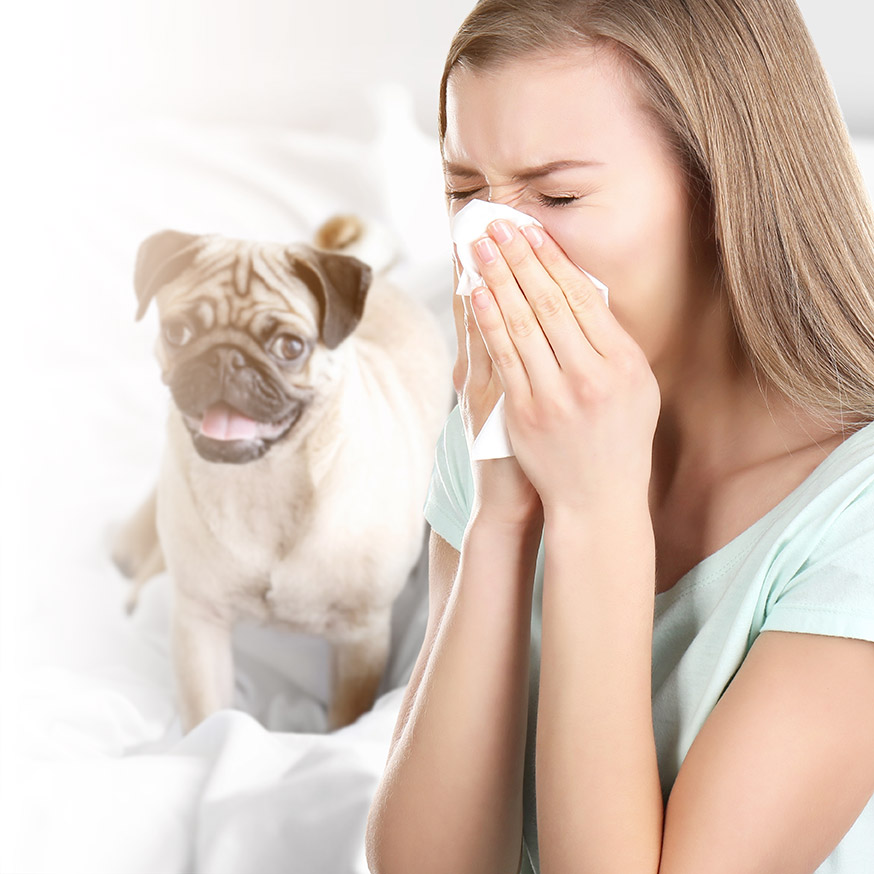Are you experiencing allergy-like symptoms? If so, do you know exactly what you are allergic to?
What is an allergy?
An allergy is the body's reaction to a substance called an “allergen”. Sometimes referred to as hypersensitivity, an allergy occurs when the immune system fights off what it perceives as a threat (the allergen), causing signs and symptoms. Most of the time, the body is not actually threatened by the “intruder” in question. The immune system must have been exposed to the allergen at least once before it overreacts.
Allergies can cause a wide range of symptoms, varying in nature and intensity. It can range from mild discomfort that is barely noticeable to death in very rare and extreme cases. Allergic events are caused by the release of an organic substance called histamine, as well as other inflammatory chemicals.
What are the most common allergens?
A variety of substances can cause allergies. Here are some examples.
Pollens
The term “seasonal allergies” is used to refer to allergies to grass pollens (e.g., hay or turf), tree/shrub pollens or ragweed.
Food
A food allergy can range from a mild to a very severe reaction. In the worst cases, it can cause anaphylactic shock and even death. Many foods can cause allergies: nuts, peanuts, eggs, milk, soy, etc.
Medications
Although some individuals are truly allergic to medications (e.g., penicillin), others have an intolerance (e.g., nausea, diarrhea, stomach upset, etc.).
Animal dander
Besides dogs and cats, many other animals can cause allergies: horses, rabbits, birds, hamsters, etc.
Dust mites
Dust mites are microscopic animals of the spider family that are invisible to the naked eye and can be found in various places in the home: bedding, mattresses, furniture, curtains, etc.
Mould
Mould is a microscopic fungus that grows in damp, dark and poorly ventilated areas: bathrooms, basements, air conditioners, etc. Mould releases spores into the air that cause allergies.
Plants
Some outdoor or indoor plants can be allergenic. This is the case with poison ivy, a widespread weed that causes an often severe skin reaction called allergic contact dermatitis.
Metals
Metals with potential allergens include nickel, chromium and cobalt. They most often cause cutaneous symptoms (on the skin).
Sun
People with allergies develop itching, redness, rashes and swelling where the skin was exposed to the sun.
It can be difficult to know exactly what you are allergic to. Sometimes the context and nature of the signs and symptoms, as well as their duration and intensity, can help guide the diagnosis. Ideally, it is best to get a medical diagnosis based on further examination and testing. Allergy testing may be deemed useful or necessary depending on the doctor's assessment.
What are the signs and symptoms of an allergy?
This usually depends on the type of allergy. The most common signs and symptoms experienced are:
- runny nose
- sneezing
- nasal congestion
- dry cough
- watery eyes
- itchy eyes, nose, palate or skin
- red eyes or skin
- skin rashes (e.g., hives or small bumps)
- etc.
In cases of severe allergies, such as those related to food, severe symptoms may occur such as swelling of the lips, tongue or face, narrowing of the throat, difficulty breathing or swallowing or anaphylactic shock.
What are the basic principles of allergy management?
First, it is important to know what is causing the allergy. If the cause of symptoms is unclear, it is a good idea to consider the context in which they occur. Where are you and what are you doing when they occur? Are you in the presence of animals, plants or trees? Are you in a humid environment? Are you in direct sunlight? Have you eaten something different or ingested an unusual substance?
You should also consider the manifestations. Do your symptoms come and go? Are they short-lived or do they last for days or weeks? Do they occur only at certain times of the year? These are all relevant questions to ask in order to identify the cause of your allergies.
The basis of allergy management is to avoid contact with the allergen. In the case of a food or drug allergy, exposure should be avoided at all costs. It may be difficult to avoid contact with some allergens (e.g., pollens, dust mites, mould or sunlight), so exposure should be minimized.
How can pharmacists help you if you have an allergy?
Pharmacists are there for you if you are experiencing allergy symptoms. First, they can advise you on the choice of products that can ease or control your symptoms, such as an antihistamine. These are the medications most often used in cases of allergies. Depending on the situation and your needs, they may also suggest a product in the form of a nasal spray, eye drops, cream, ointment, injectable device (e.g. EpiPen® or Allerject), etc. Your pharmacist can now prescribe several treatments for the relief of allergy symptoms.
Pharmacists are knowledgeable about allergies. Although they cannot make a medical diagnosis, they can still help you find the cause of your allergy symptoms. They can also advise you on other measures to help you feel better and help you eliminate or reduce contact with the allergen. Consider them your ally in managing your allergies!

